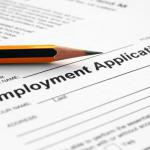The Harsh Reality of ‘Ban the Box’ Reform Efforts

One in three Americans has a criminal record. Regardless of conviction, circumstances, age, and severity of crime, this record can and does have significant effect on that person’s ability to find housing, employment, education, food assistance and even essential health care.
That’s one hundred million Americans. Stunning. Thanks to cell phone video and social media, more and more of us are witnessing the injustice and brutality of racial profiling and criminalization of low-income, black, Latino, and transgender people nationwide. These realities have given rise to #BlackLivesMatter, investigations into Ferguson-type revenue extortion for minor code violations, moves to end destructive Zero Tolerance policies in poor, majority-black schools, and to reforms of unjust mandatory minimum sentencing laws. There is even a rare bi-partisan recognition that our shocking levels of mass incarceration are in need of reform.
Incremental Reform Underway
In the vein, over 6,000 federal prisoners won early release and streamed home—or to overcrowded halfway houses or immigrant detention centers—this weekend. This is a tiny fraction of the 2.2 million incarcerated people in the US, but it means everything to those released and their loved ones. And it’s arguably very important symbolically.
President Obama travelled to Newark, New Jersey in the wake of the release to highlight some obstacles that returning citizens face after release from prison. One of the most significant barriers is the barrier to employment. Studies show that job applicants who must check the box revealing criminal records are only half as likely to advance past the application process than those without records. It’s even worse for black applicants with record; they are only one-third as likely to advance in the application process.
To begin to address the pervasive problem, President Obama repeated his call to to ‘ban the box‘ for formerly incarcerated people This policy takes several forms, but usually eliminates the box on job applications which someone with a criminal record would otherwise need to check. Employers can still run background checks on the internet of course, and may inquire about criminal records later in the process. Over 100 cities and 19 states have some form of this policy. It may apply to local or state, private or public employers, depending on the legislation. Obama is calling for it at the federal level in some circumstances.
On the face of it, it’s a good first step. However, when you consider that it is black people who disproportionately have criminal records, and that employers will hire white people with criminal records over black applicants with no records, how far does it really go? Indeed, could it even give the formerly incarcerated white applicant an added advantage over the black applicant?
Other Collateral Consequences
This is just one of the many issues we must confront as the political climate has grown more intolerant of over-crowded prisons. What are formerly incarcerated people coming home to? Over-crowded halfway houses? Effectively prolonged sentences because no half-way house is available? Exclusion from over 800 occupations? No access to housing, to food assistance, to health and mental health services? Disenfranchisement? Further indenture through private parole companies? Even an initiative with the good intention of eliminating the barrier of the criminal record box on job applications may turn out to have negative consequences for some black home-comers.
Take the Injustice Out of the Criminal Justice System
Wouldn’t it be better not to lock up so many people in the first place? Mass incarceration and the ‘war on crime’ didn’t decrease the crime rate. Indeed violent crime rate came down aswe started reducing the prison population. Children suspended, expelled and referred to the juvenile justice system haven’t been helped. They’ve been sentenced to a stunning lack of opportunity and a drastically increased possibility of much more time behind bars as adults.
The black unemployment rate still hovers around 10%, nearly double that of whites in October 2015. The poverty rate for black Americans is nearly three times higher than that of whites. Though black children make up only 18% of the preschool population, they are about half of those suspended. We’re talking 3- and 4-year-olds. Black schoolgirls are six times more likely to be suspended than their white peers. And all black students are three times more likely to experience suspensions, expulsions and referrals to the criminal justice system than their white peers for similar offenses. Over 70% of suspensions, expulsions and referrals are of black and Latino students.
And this matters. Just one suspension doubles a child’s chances of never finishing high school. Children with expulsions are three times more likely to end up in the juvenile justice system. Once in the juvenile justice system, that child’s re-incarceration by age 25 is nearly 70%.
It’s madness. It’s racist. It’s unjust. It’s inhumane. Bringing home 6,000 federal prisoners a few months early and delaying disclosure of criminal records for federal job applicants are both better steps to take than no action at all. Indeed it represents a positive change in the way we think about mass-incarceration and obstacles to re-entry. It no doubt will have a trickle-down effect to state prisons and state laws where the vast majority of people are suffering unjustly. But is a “trickle-down” effect enough?
Karen Dolan directs the Criminalization of Poverty project at the Institute for Policy Studies.
